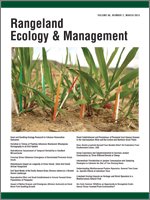Re-establishing native communities that resist exotic weed invasion and provide diverse habitat for wildlife are high priorities for restoration in sagebrush ecosystems. Native forbs are an important component of healthy rangelands in this system, but they are rarely included in seedings. Understanding competitive interactions between forb and grass seedlings is required to devise seeding strategies that can enhance establishment of diverse native species assemblages in degraded sagebrush communities. We conducted a greenhouse experiment to examine seedling biomass and relative growth rate of common native forb species when grown alone or in the presence of a native bunchgrass or an exotic annual grass. Forb species included bigseed biscuitroot (Lomatium macrocarpum [Nutt. ex Torr. & A. Gray] J.M. Coult. & Rose), sulphur-flower buckwheat (Eriogonum umbellatum Torr.), hoary aster (Machaeranthera canescens [Pursh] Gray), royal penstemon (Penstemon speciosus Douglas ex Lindl.), and Munro's globemallow (Sphaeralcea munroana [Douglas ex Lindl.] Spach ex Gray); and neighboring grass species included bottlebrush squirreltail (Elymus elymoides [Raf.] Swezey), Sandberg bluegrass (Poa secunda J. Presl); and cheatgrass (Bromus tectorum L.). Forbs and grasses were harvested after 6, 9, or 12 wk of growth for biomass determination and calculation of relative growth rates (RGR) of forbs. Neither bunchgrass reduced biomass of any forb. RGR was reduced for royal penstemon when grown with either native grass and for Munro's globemallow when grown with bottlebrush squirreltail. Although only assessed qualitatively, forbs with vertically oriented root morphologies exhibited no reduction in RGR when grown with native grasses, compared to forbs with dense lateral branching, similar to the root morphology of native grasses. Biomass of forbs was reduced by 50% to 91% and RGR by 37% to 80% when grown with cheatgrass. Understanding native forb interactions with native grasses and cheatgrass will aid land managers in selecting effective seed mixes and making better use of costly seed.
How to translate text using browser tools
1 March 2013
Impact of Native Grasses and Cheatgrass ( Bromus tectorum) on Great Basin Forb Seedling Growth
Hilary Parkinson,
Cathy Zabinski,
Nancy Shaw
ACCESS THE FULL ARTICLE

Rangeland Ecology and Management
Vol. 66 • No. 2
March 2013
Vol. 66 • No. 2
March 2013
invasive species
relative growth rate
restoration
revegetation
Root morphology




